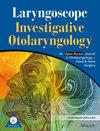Mutations in Anaplastic Thyroid Carcinoma: An Analysis of the Japanese National Genomic Database
Abstract
Objectives
The purpose of this study is to investigate the genetic mutational status of anaplastic thyroid carcinoma (ATC) and its prognostic implications.
Methods
Data were analyzed for 129 consecutive patients with ATC registered at the Japan National Cancer Center, Center for Cancer Genomics and Advanced Therapeutics (C-CAT) between June 2019 and June 2024. Genetic alterations were determined by FoundationOne CDx or Liquid CDx next-generation sequencing. The survival of patients was determined by the log-rank test and a Cox proportional hazards model.
Results
The top 30 mutations in ATC were TERT (98/129), TP53 (88/129), BRAF (72/129), CDKN2A (39/129), CDKN2B (29/129), LTK (26/129), NRAS (25/129), KMT2D (24/129), PIK3CA (26/129), NOTCH3 (27/129), NF2 (19/129), MTAP (17/129), TET2 (16/129), STK11 (15/129), ATM (14/129), FANCA (14/129), NF1 (13/129), DNMT3A (13/129), KIT (13/129), NOTCH1 (13/129), EP300 (12/129), BRCA2 (11/129), CARD11 (11/129), KEL (11/129), MSH3 (11/129), PTEN (11/129), RICTOR (11/129), TSC1 (11/129), ROS1 (10/129), and KMT2A (10/129) with 13.7 ± 0.5 (mean ± SEM) mutations/individual. Mutations in BRAF (p = 0.003), PIK3CA (p = 0.014), and BRCA2 (p = 0.036) were associated with a significantly better prognosis, whereas mutations in STK11 (p = 0.024) was associated with a significantly worse prognosis, as determined by log-rank tests. The hazard ratios for cases with these mutations were 0.248 (95% CI, 0.0973–0.633, p = 3.5 × 10−3) for PIK3CA, 2.410 (1.054–5.515, p = 0.037) for STK11, and 0.157 (0.0376–0.659, p = 0.011) for BRCA2.
Conclusions
In ATC, PIK3CA, and BRCA2 mutations were associated with a better prognosis, and STK11 mutation was associated with a poorer prognosis in this study.
Level of Evidence
3.


 求助内容:
求助内容: 应助结果提醒方式:
应助结果提醒方式:


